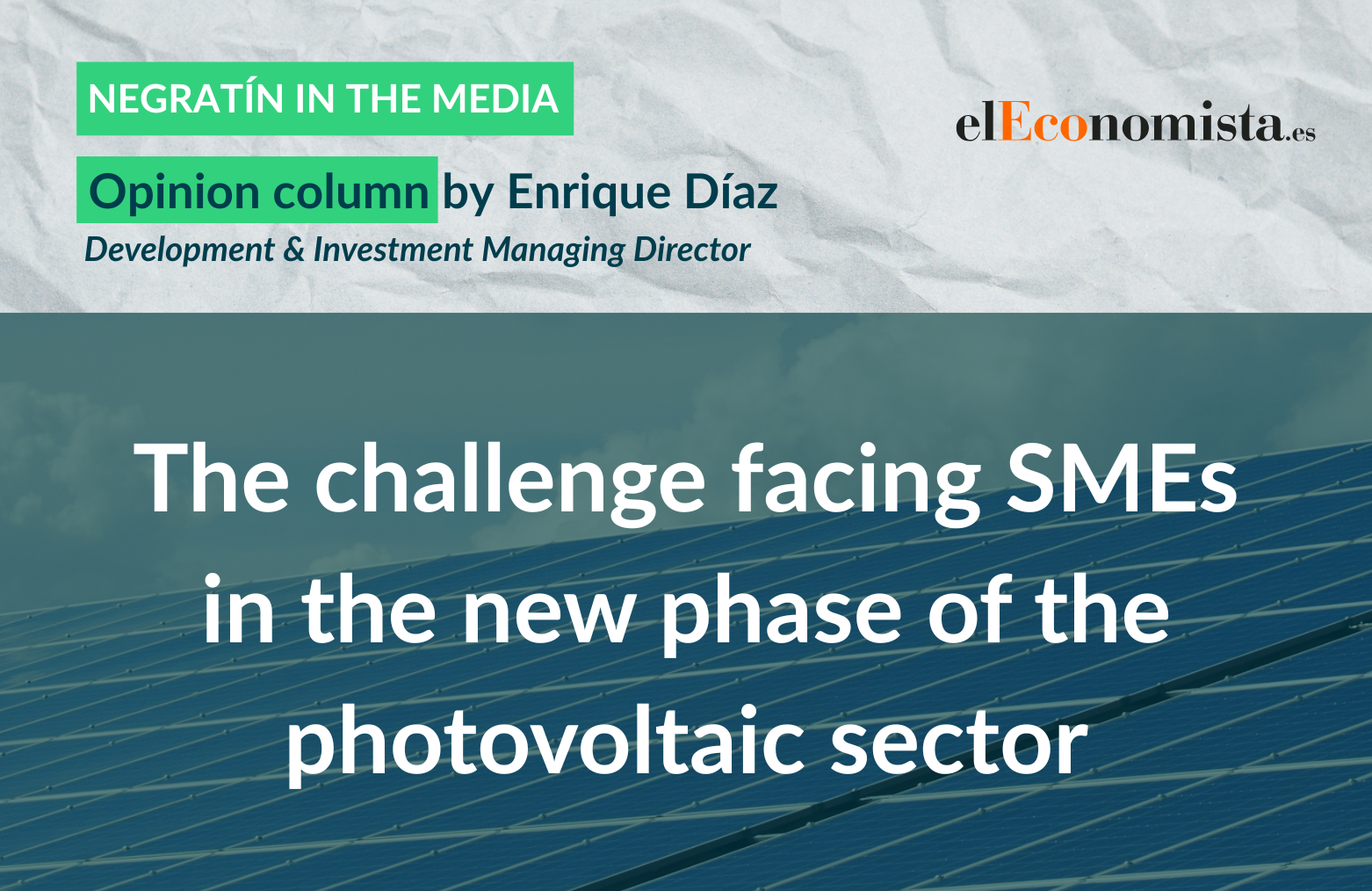Negratin in the media
7 August, 2025

In 2024, approximately 6 GW were installed, 7% more than in 2023 (5.6 GW), which in turn was 25% more than in 2022 (4.6 GW). In February 2025, total installed capacity reached 32 GW, slightly exceeding wind capacity for the first time. This year, the (optimistic) expectation is that last year’s figure will be reached, widening this gap.
However, growth is always followed by stabilization. The sector has entered a different phase, marked by grid saturation and, above all, by global energy demand that has not yet taken off—the long-awaited electrification of transport and industry—and remains at pre-pandemic levels (250 TWh), pushing down prices and, therefore, margins, and tightening financing conditions. This does not mean the end of photovoltaic energy, far from it. In fact, Spain remains one of the most attractive markets in Europe for this technology, and the pace of deployment has been exemplary. But we are facing a change of cycle. And the rules are no longer the same. In this new scenario, small and medium-sized companies in the sector, many of them with industrial DNA and decades of experience in executing real projects, must step up to continue contributing to the energy transition process.
It is a question of leaving behind volume-based models, in which it is also difficult to compete with the big players, and starting to focus on diversification and technological hybridization strategies, as well as on improving efficiency in the design, execution, and operation of these generation assets. At Negratín, we are firmly committed to strengthening our internal engineering and execution capabilities in the area of construction (EPC, in industry jargon), as well as to designing cost and deadline control tools and monitoring the progress of execution adapted to this type of project. This allows us to remain competitive in the Spanish market and enables long-term customers to make their projects profitable by optimizing (in CAPEX) their new photovoltaic projects, hybridizing existing assets with battery energy storage systems (BESS), or reducing their operating expenses (OPEX). In the Development (Promotion) area, responsible for generating the package of permits and authorizations that allow this type of plant to be built, at Negratín we are already focused on the hybridization of ongoing projects and the development of battery storage projects (BESS, Stand Alone).
On the other hand, there are still other challenges, such as regulatory ones, which can only be addressed through education, so that technical fundamentals prevail over other types of considerations. These lessons learned from the Spanish market generate market intelligence that allows us to anticipate the need for new development strategies and technologies in other countries such as Colombia. In fact, in this country, where Negratín is the undisputed market leader with a 30% share, it also invests in photovoltaic assets through NGS Investments. Specifically, the first of these will come online this year and is expected to reach financial closure on a package of more than 100 MW.
In short, we are facing a change in the business model, within the change in the energy model itself, that is, “change within change.” As in any transformation process, there are two interpretations: the negative one, derived from the fact that “what used to work no longer works,” and the positive one, for those companies (especially SMEs) whose size allows them to have the necessary flexibility to turn this scenario into an opportunity, with a correct interpretation of the new situation.
This opinion column was published in El Economista on August 7, 2025.
El reto de las pymes en la nueva etapa del sector fotovoltaico